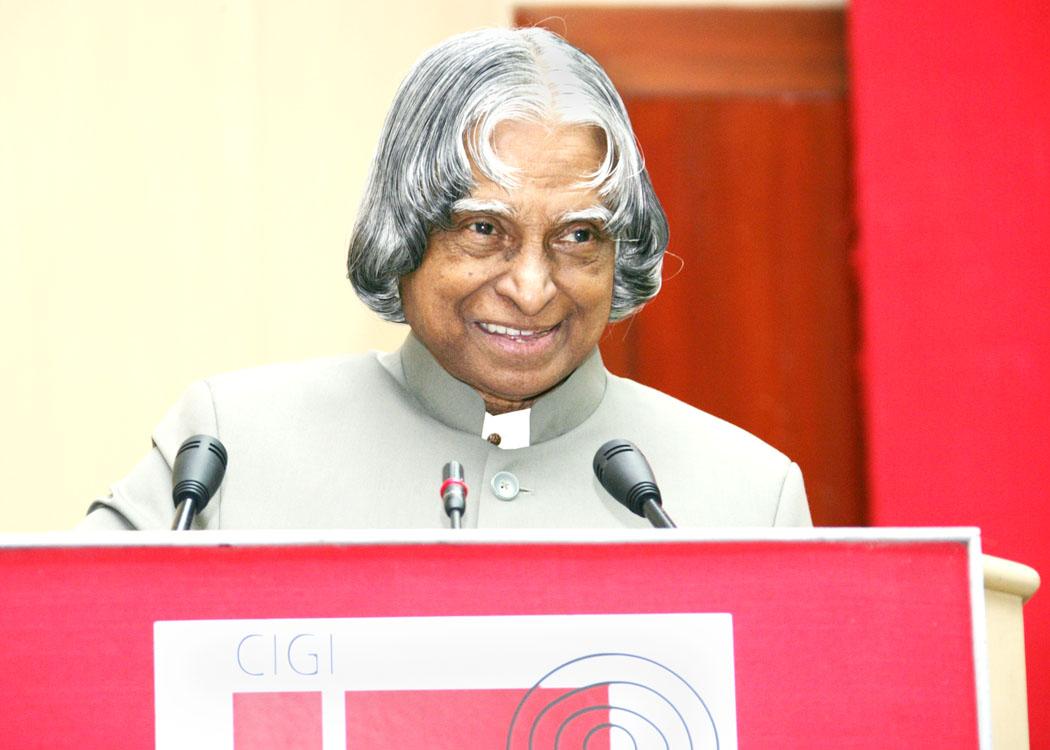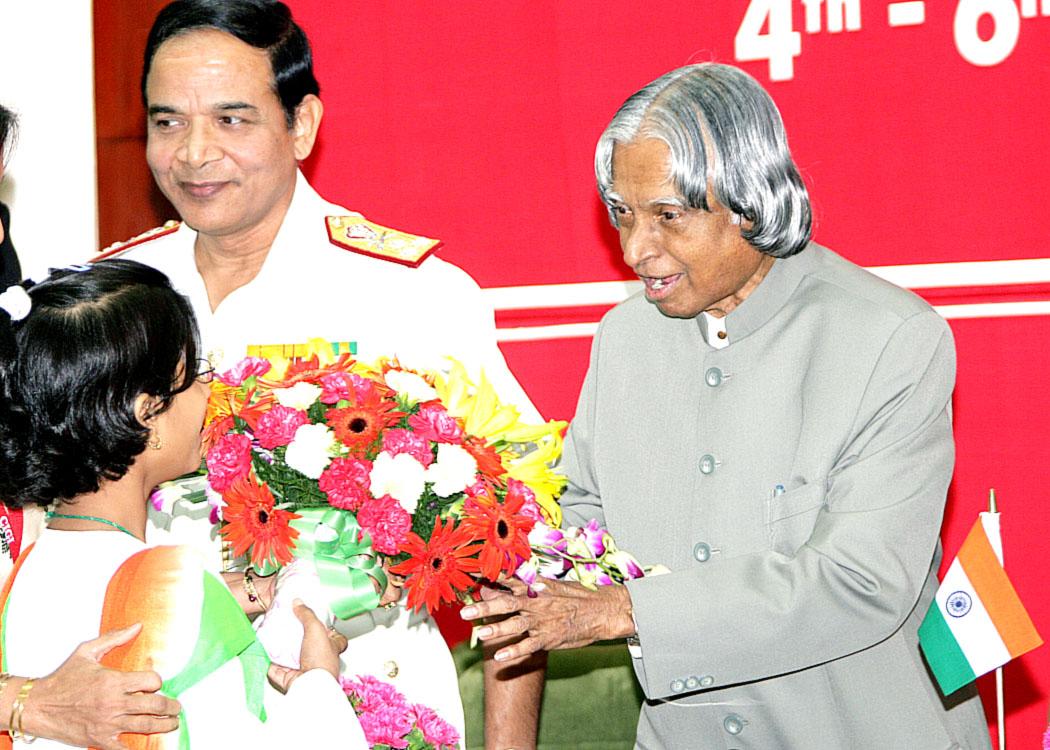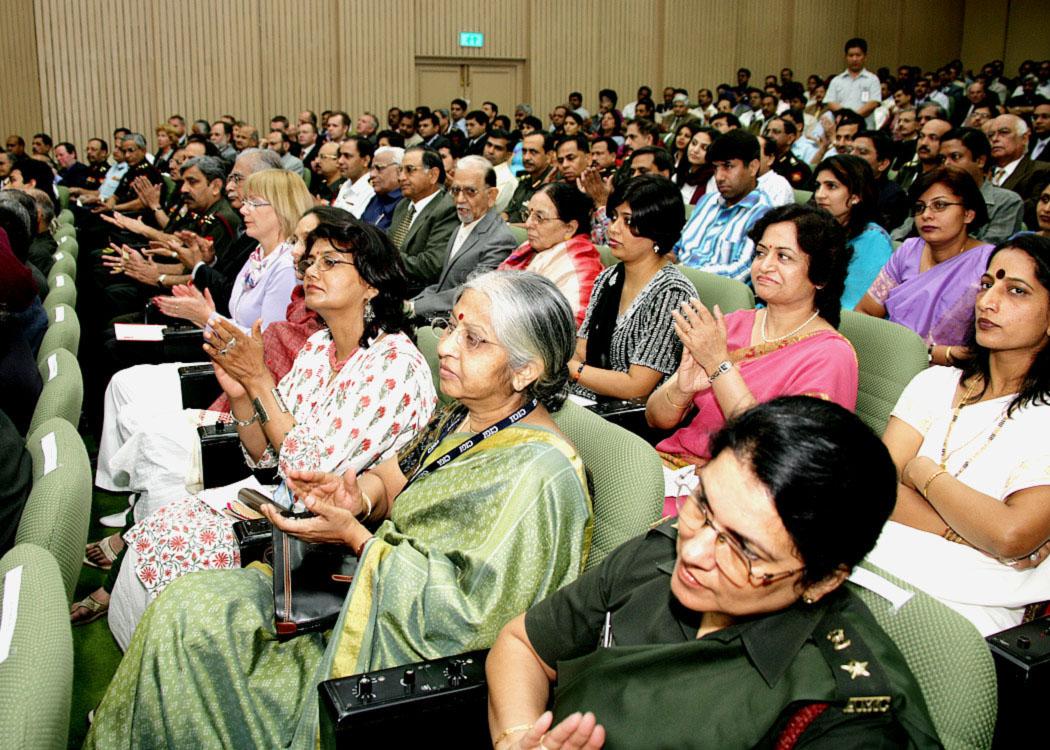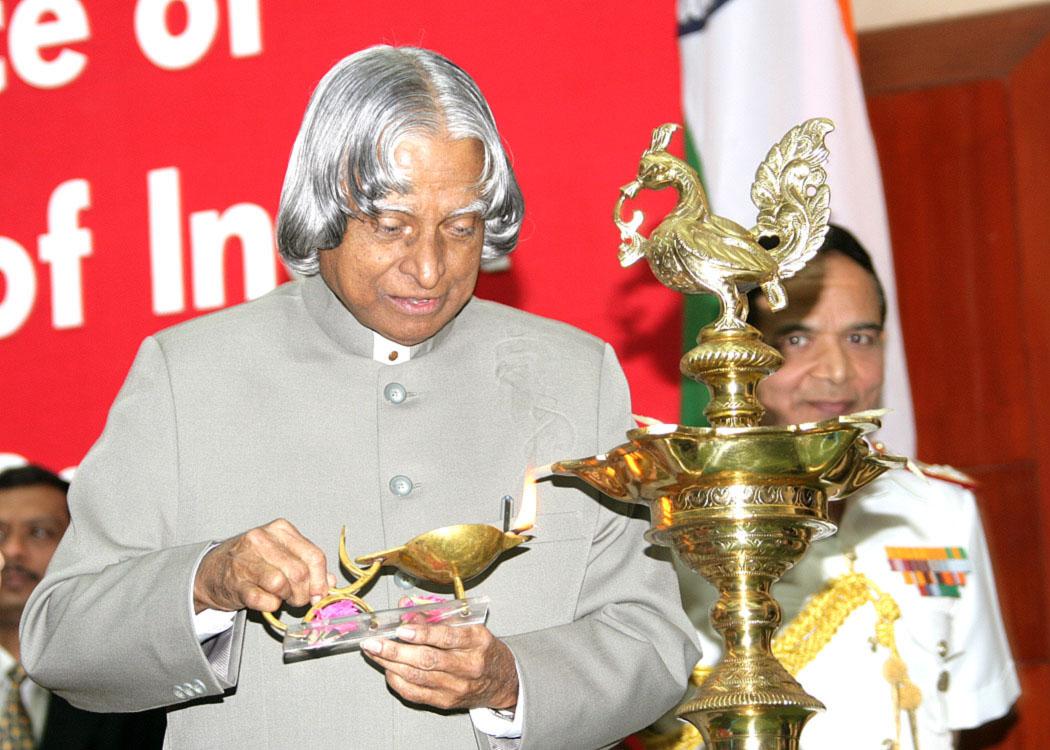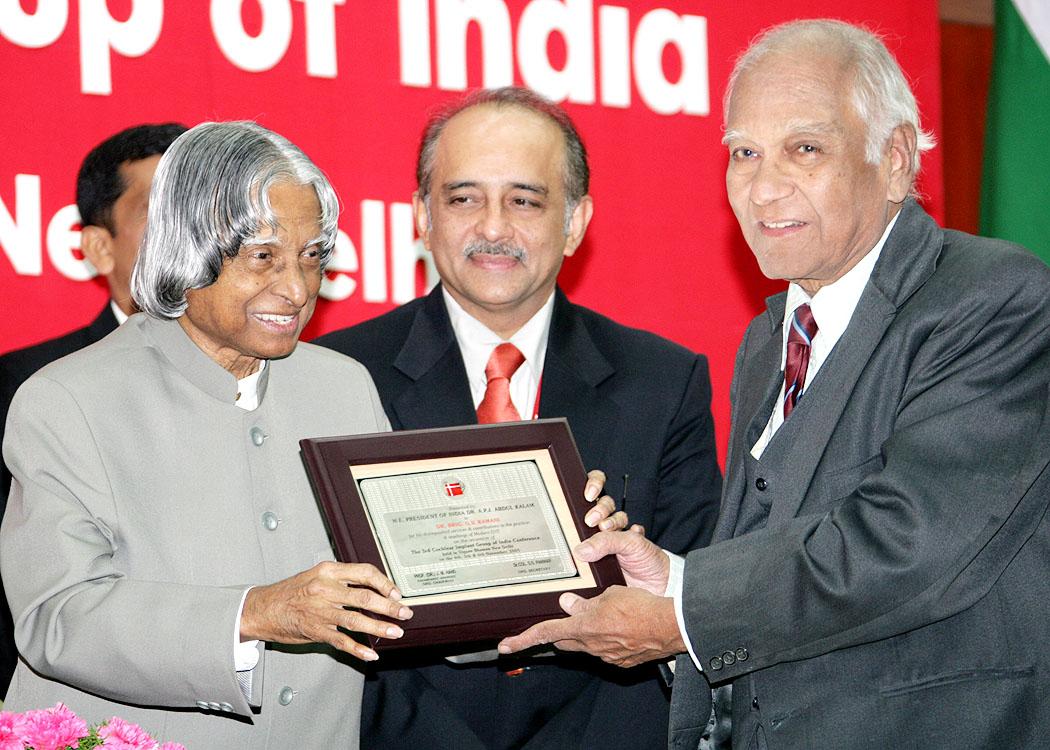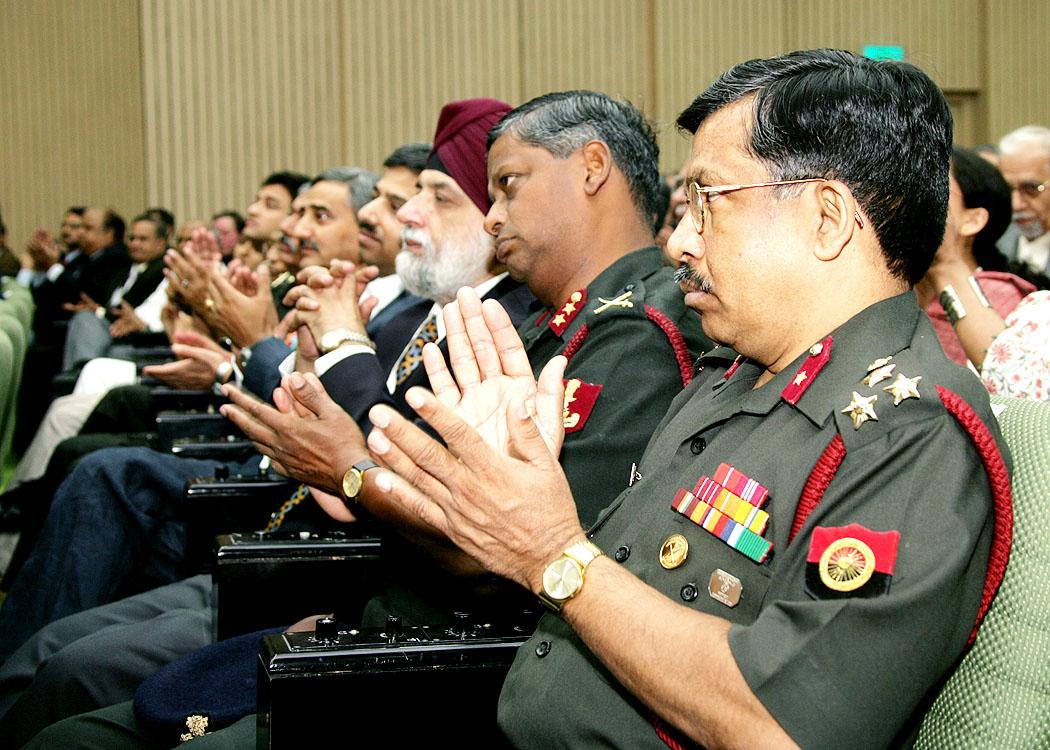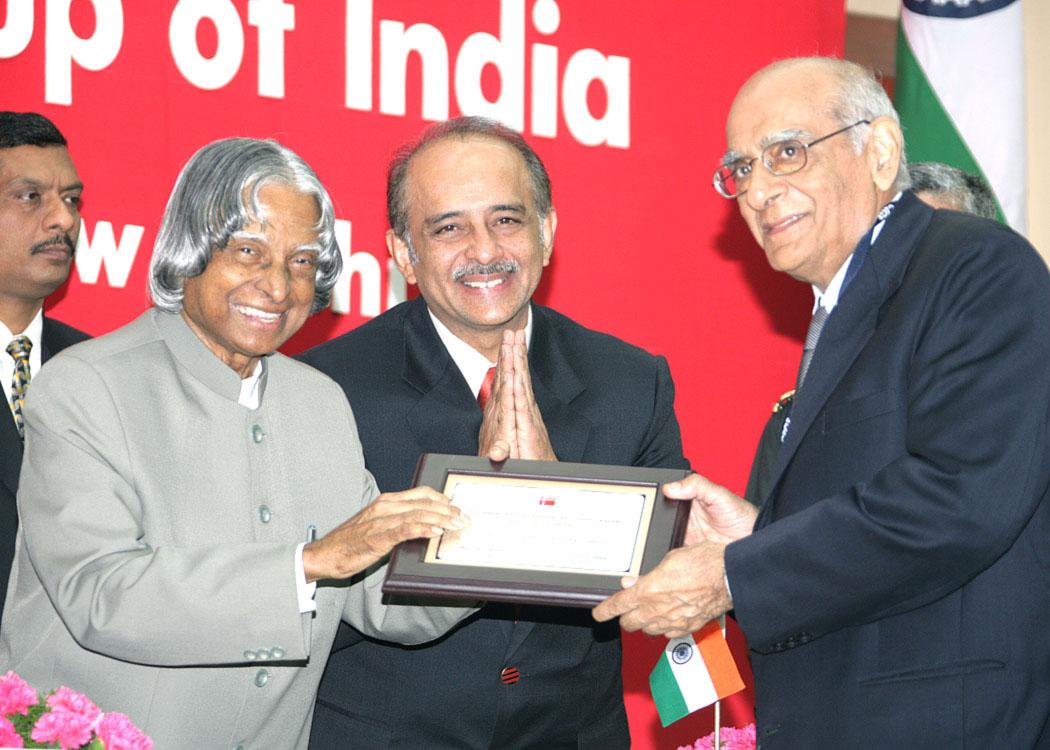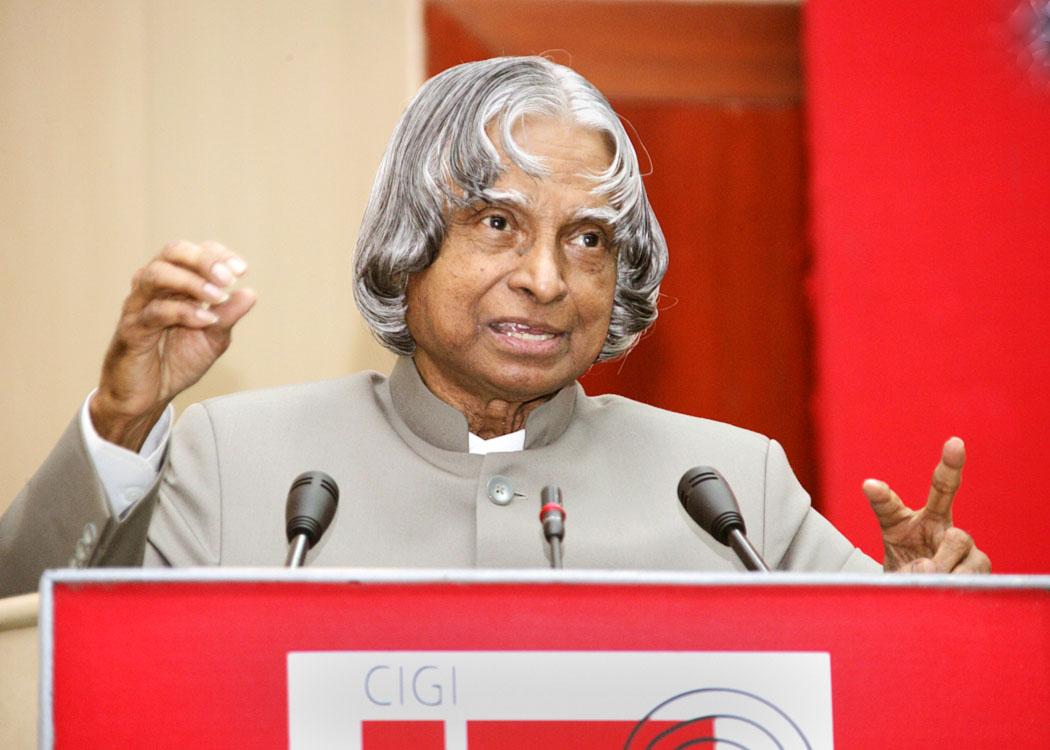Address At The Inauguration Of The 3Rd Cochlear Implant Group Of India Conference, Vigyan Bhavan
New Delhi : 05-11-2005
The Mission: Hearing and Speech for All
I am delighted to participate in the inauguration of 3rd Cochlear Implant Group of India Conference. I greet the organizers, ENT specialists, Neurologists, Audiologists, Paediatricians, Medical social scientists, Medical Technologists device manufacturers and other distinguished guests. I am happy to note that the Cochlear Implant Group of India during the last three years has created a special awakening for the treatment of people with profound hearing impairment. Hearing and speech are the two important faculties given by the Almighty to the mankind among many others. The restoration of these faculties to the people, who do not possess, is indeed a great service to the God. I was wondering what thoughts I can share with this audience. I would like to discuss the topic "The Mission: Hearing and Speech for All".
My Experience with Cochlear Implants
When I visited Vikram hospital in Coimbatore few years back, I realized technological intervention is possible for bringing back hearing to the deaf and dumb children by implanting a device called Cochlear Implant. Dr. Aruna Viswanathan and her team demonstrated to me about the whole process of implanting the device and the subsequent training procedure to the children. I saw 4 year old deaf and dumb children. After one of month of implanting and training they spoke out few words legibly. After 6 months of computer-aided training, I have seen the children speaking normally. This touching scene moved me. I felt that I have to work to bring the cost of cochlear implant down, so that thousands and thousands of children in India and abroad can afford to have this device and lead a normal life. That is why I am with you today.
The Status of Hearing Impairment
As per recent statistics number of people with profound hearing disability in India is about one million. In addition, there are over 1.2 million people with severe hearing disability, 0.9 million people with moderate hearing disability and 7.1 million people with very mild hearing disability. The medical community, social institutions and corporate houses have the task of restoring the disability of nearly 10 million people with the support of the Government. The severe, moderate and mild category disability can be treated using conventional and digital hearing aids. Many ENT specialists spread across the country are doing this to a certain extent. But this has got to be intensified in the remote rural areas where people with disability suffer silently. Can we remove this pain?
Cochlear Implant
Regarding the profound hearing disability, treatment is undertaken only in very few medical institutions since it needs a special device called cochlear implant, which I described to you earlier. When the child doesn't have the hearing capacity it leads to dumbness. Cochlear implant coupled with computer aided training helps the deaf and dumb individuals to regain near normal hearing/speaking capabilities. Basically it is bypassing the damaged inner ear portion by replacing its functions with an electronic system having external mike, speech processing circuit, transmitter and a receiver. The receiver is implanted below the ear. The receiver has an electrode, which will be inserted into the cochlear portion of the ear. Speech processor processes the input audio signals and converts them into electrical signals in various channels. The transmitter transmits these signals to the implant's multi-channel electrode, which terminates in various points of the cochlear. The latest cochlear implant technology, contour advance, recently introduced in India, is specifically designed to protect the small and delicate cochlea structures during surgery. This helps to preserve any residual hearing. Its curved shape also provides more focused stimulation of the hearing nerve for better quality outcomes. The further research in cochlear implant must lead to design and production of cochlear implants which will need minimum invasive procedures for fitment.
Indian Experience in Cochlear Implant
The fitment of cochlear implants for treating the profound hearing impaired cases started in India in the year 1995. In the beginning, there used to be five or ten cases treated each year. Today, due to the awareness created by various institutions we are able to fit 150 implants a year. I am happy to know that among the hundred and fifty fitted, Army hospitals account for nearly seventy. In the last one-decade we have treated nearly 750 cases in all. That means we are able to reach only 0.075% of the affected population in the country. There has been continuous improvement in the cochlear implants produced by international manufacturers and the cost of implant has also been going up. How do we reach, all the people affected by profound hearing disability. This is what this conference must address. Then only we will be able to achieve the goal of providing hearing and speech for all.
Challenges in treating profound hearing disability
There are three challenges in removing the profound hearing disability. One is a production of a cost effective cochlear implant, second is less invasiveness of the surgical procedure and the third is kindhearted doctors who implant and train the patients further. Presently, the cost of implant works out to nearly Rs. 6 to 8 lakhs per piece and the total cost of the operation including rehabilitation will work out to Rs. 10 lakh per patient. This cost is unaffordable for many people in our country. In many countries the cost of cochlear implant including the operation is borne by the insurance companies or the social welfare schemes. In the absence of such a scheme in the country there is a need to have a three-pronged approach to solve the problem. The corporate world can bear the cost of cochlear implant for fitment to certain number of patients as a societal mission. Secondly, there must be a concerted effort by Indian Scientists and engineers in collaboration with ENT specialists, neurologists, audiologists and paediatricians to develop a cost effective cochlear implant through a mission mode programme. Development tasks have to be undertaken in parallel by two or three groups. Thirdly, the Government can consider waiving certain levies presently charged on import of cochlear implants.
Beautiful mission of a corporate industry
The people who are otherwise healthy in body and mind get isolated because of deafness. Helen Keller says if "I were to be born again with physical impairment, I would prefer to be blind rather than deaf, as deafness isolates more". Hence it is essential to empower each child or adult with profound hearing impairment with cochlear implant as the child will be able to hear its father and mother apart from music. I would like to narrate one experience, which took place on 2nd October 2005 at Rashtrapati Bhavan. To mark the 60th Anniversary of Mahindra & Mahindra, the management decided to donate 60 cochlear implants to hearing impaired. I inaugurated this programme. The other corporate groups and social institutions spread in different parts of the country can also participate in this noble societal mission and donate a certain number of cochlear implants to the needy patients. The Government on its part can provide 150% weighted deduction of such contribution for purposes of computing income tax.
Indigenous Manufacturing of Critical Support Systems
Some development activity has been initiated to design, develop and manufacture low cost cochlear implants in the country. This should be taken up in a mission mode by at least two groups and we should aim at bringing out the basic cochlear implant without frills. For example, I understand that the number of electrodes needed for realizing reasonable audibility is just seven whereas manufacturers use ten, sixteen and twenty two. Electro Physiologists for ears confirm that the audibility improvement beyond seven electrodes is very marginal and the designers should keep this in mind. I am sure the scientists, engineers, and the medical community assembled here will be able to take this challenge and bring out a cochlear implant within the next two years costing less than Rs. 1 lakh. In this direction, I appreciate the initiative taken by DRDO. We must succeed in this development, so that we can offer this product to many needy patients, spread in different parts of the world.
Apart from the above two interventions, the government can consider waiving the custom duty and sales tax levied on the import of cochlear implant in the country. This will substantially reduce the cost of cochlear implant and the operation and make it affordable to certain class of people in the interim period while the indigenous development is in progress.
Investment in Ear-care
Recently, I studied the pyramid model of eye-care delivery as focused by Dr. G N Rao. It involves creation of a four-tier system of treatment namely primary, secondary, tertiary and advanced tertiary care. In India, we have 20% vision centres for primary care, 70% service centers for secondary care, 50% training centers for tertiary care and 25% centers of excellence. We need to double the investment to provide full compliment of eye care facility for all the four sectors with participating eye centers, government agencies and international partners. Cochlear Implant Group of India can study this Pyramid model and prepare an ear-care pyramid model. An integrated proposal based on the ear-care pyramid model can be prepared by the Cochlear Implant Group of India for preventing deafness, for submission to the Ministry of Health, private sector industries and societal organizations for necessary funding.
Societal Mission
"Defect free hearing and speech for all" should be our national mission. The ear problem of the children can be corrected, if diagnosed early. Such programmes should aim at screening all the children. I would suggest that societal organizations could launch a "hearing and speech for kids" programme on the lines of "sight for kids" programme launched by the Government of Andhra Pradesh. Teams of paramedical personnel can visit nearby schools and villages and examine children for possible hearing and speech defects. Any one having defective hearing or any obvious complaints should be sent to the nearest center for further investigation and treatment. I have been asking the students to be helpful to their colleagues by bringing out special hearing problem of the child to the notice of the parents or the teachers.
We have the best of doctors and technologists in India. We have core competence in design and software engineering. Emerging technologies in virtual reality and micro machines will transform the healthcare scenario. This transformation should lead to helping the people who cannot afford the modern medical care. To improve the availability of hearing and speech care facility to the rural masses, I recommend deployment of mobile hearing and speech clinics by all the ENT centers. One of the great qualities of human being as envisioned by Almighty is to give and give. What any one of us can give who is blessed with hearing and speech. When I see you all, eminent ENT specialists, neurologists, audiologists, paediatricians and medical technologists, I find God has blessed you all to give the hearing and speech for thousands and thousands of our fellow citizens. In this direction anything is needed, I can certainly assist.
Conclusion
Disability in general reduces the self-esteem of the individual and increases the dependence on others. Especially in rural setting, the disabled person is dependent on parents, relatives or friends. Our efforts must be to bring about a sense of equality and liberty among the disabled persons, either men or women. Equality can be generated by first liberating them from the causes of disability like hearing impairment. This can be achieved by providing assistive devices and systems, which will enable them to carry out their tasks without dependence on others. Also the disabled can be facilitated to achieve economic independence by providing them vocational skills consistent with their individual strengths. The committee of experts including representatives from corporate and voluntary sectors has identified around 120 occupations at executive / management / supervisory levels and around 946 occupations at skilled / semi-skilled / unskilled levels for employing disabled persons without compromising the quality of work. Organizations and industry should voluntarily come forward to offer these occupations to the disabled so that they can realize their economic independence and also have the satisfaction of contributing to the cause of nation building. This is the only way we can provide equality and liberty to the disabled brothers and sisters of our society.
My best wishes to Cochlear Implant Group of India and the cochlear implant development groups for success in their mission of providing hearing and speech for all.
May God Bless you.

